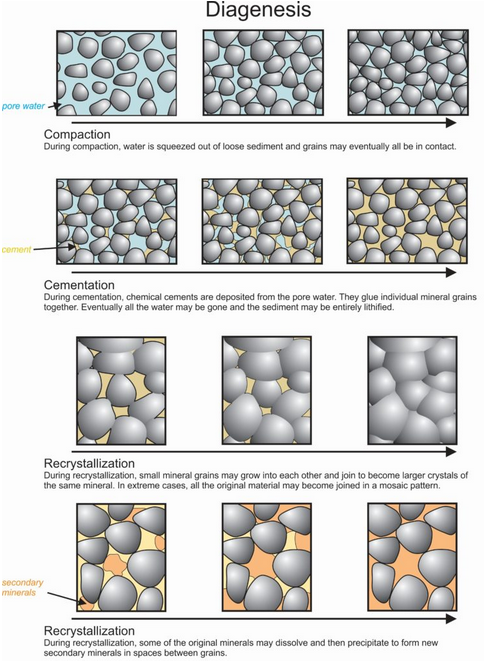7.3.1: Clastic Sedimentation
- Page ID
- 18689

Flowing water transports clastic material until it reaches a place where it collects, perhaps a river or lake bottom, or maybe a delta. Wind, gravity, and other agents can move clastic material as well. Eventually, sediments are deposited when the forces of gravity overcome those trying to move them.
Large grains may not move far and are deposited first. As the energy of transportation decreases, smaller material is deposited. So, during transportation, sediments commonly become sorted, which means that sediment deposits often have relatively uniform grain size. Thus, for example, coarse material may be deposited near the headwaters of a stream, while only fine material makes it to a delta. Sorting is not ubiquitous. Streambed gravel, for example, may contain a mix of silt, sand, and larger clasts, and glacial deposits often contain a jumble of material of many different sizes. The photo above (Figure 7.12) shows very poorly sorted alluvium (loose, unconsolidated nonmarine sediment deposited by rivers or streams) in Argentina.
After deposition, unconsolidated sediment may, over time, change into a clastic sedimentary rock by the process called lithification (from lithos, the Greek word meaning stone). Lithification involves compaction and cementation of clastic material. Common cementing agents include the minerals quartz, calcite, and hematite.

Before, during, and after lithification, sedimentary rocks undergo textural or chemical changes due to heating, compaction, or reaction with groundwaters. Biological agents, including small animals or bacteria, also can be important, as can chemical agents brought in by flowing water. We call these changes collectively diagenesis. Figure 7.13 depicts the major steps of diagenesis: compaction, cementation, and recrystallization.
Dissolution and removal of minerals (leaching) and the formation of clay or other minerals are both common during diagenesis. We call any new minerals that form, authigenic minerals. Zeolites, clays, feldspar, pyrite, and quartz can all be authigenic minerals. Although diagenesis creates many authigenic minerals, most are so fine grained that we cannot identify them without X-ray analysis.
Textural changes, including compaction and loss of pore space, are common and are part of diagenesis. Recrystallization, the changing of fine-grained rocks into coarser ones, is another form of diagenetic textural change. During recrystallization, as individual mineral grains grow together, secondary minerals may precipitate in open spaces, and more mineral cements may develop. Consequently, rocks become harder.
Diagenesis is equivalent to a low-temperature, low-pressure form of metamorphism, and the processes of sedimentation, lithification, diagenesis, and low-grade metamorphism form a continuum. Lithification changes unconsolidated sediment into a rock. Cementation by quartz, calcite, or hematite may be part of the lithification process. It also may be considered a diagenetic process. Similarly, the formation of many low-temperature minerals such as zeolites, a normal part of diagenesis, overlaps with the beginnings of metamorphism. Metamorphic petrologists often define the onset of metamorphism by the first occurrence of metamorphic minerals. This definition can be hard to apply because many diagenetic minerals are also metamorphic minerals. Furthermore, laumontite, often considered to be formed at the lowest temperature of all metamorphic minerals, is a zeolite that is hard to distinguish from minerals that form diagenetically.


